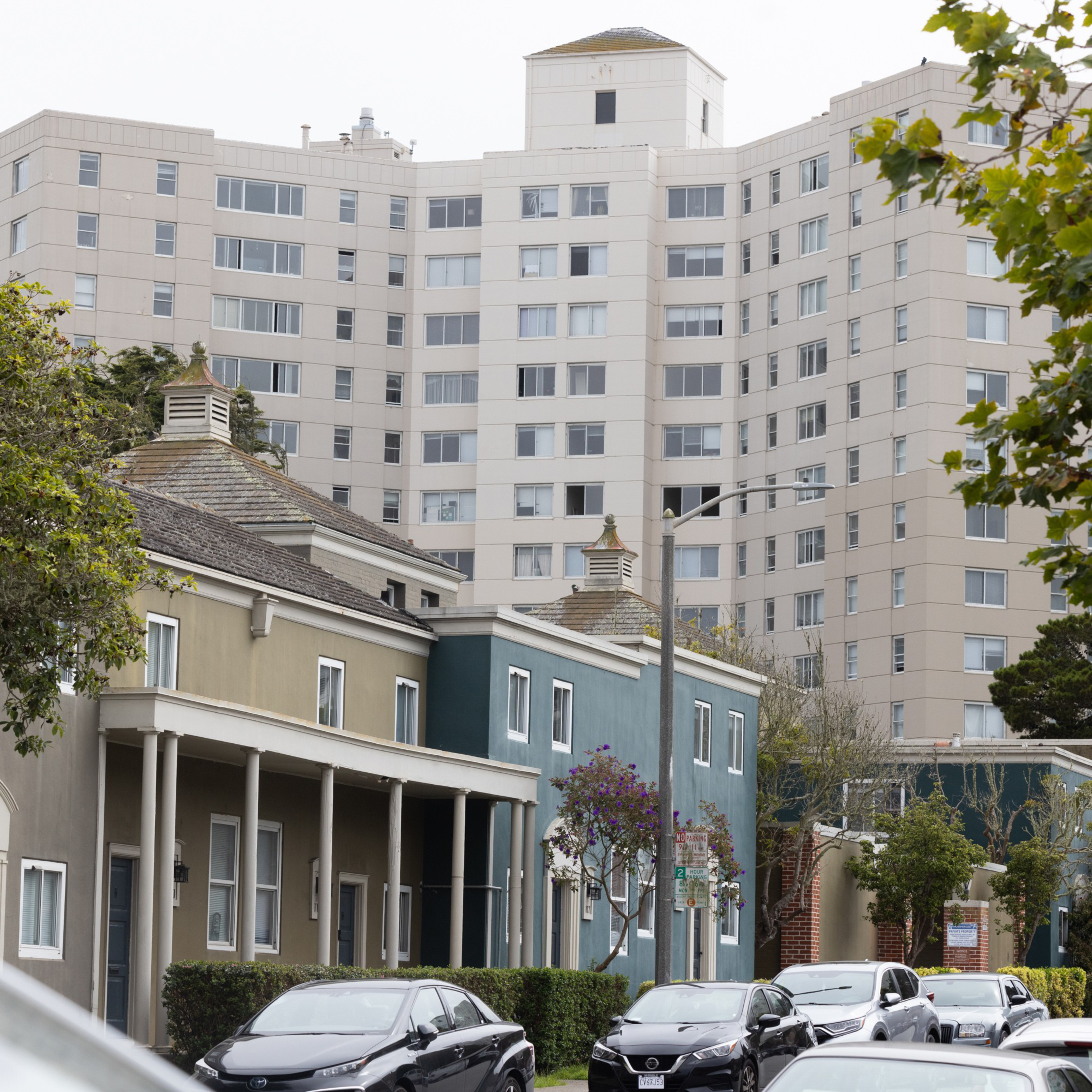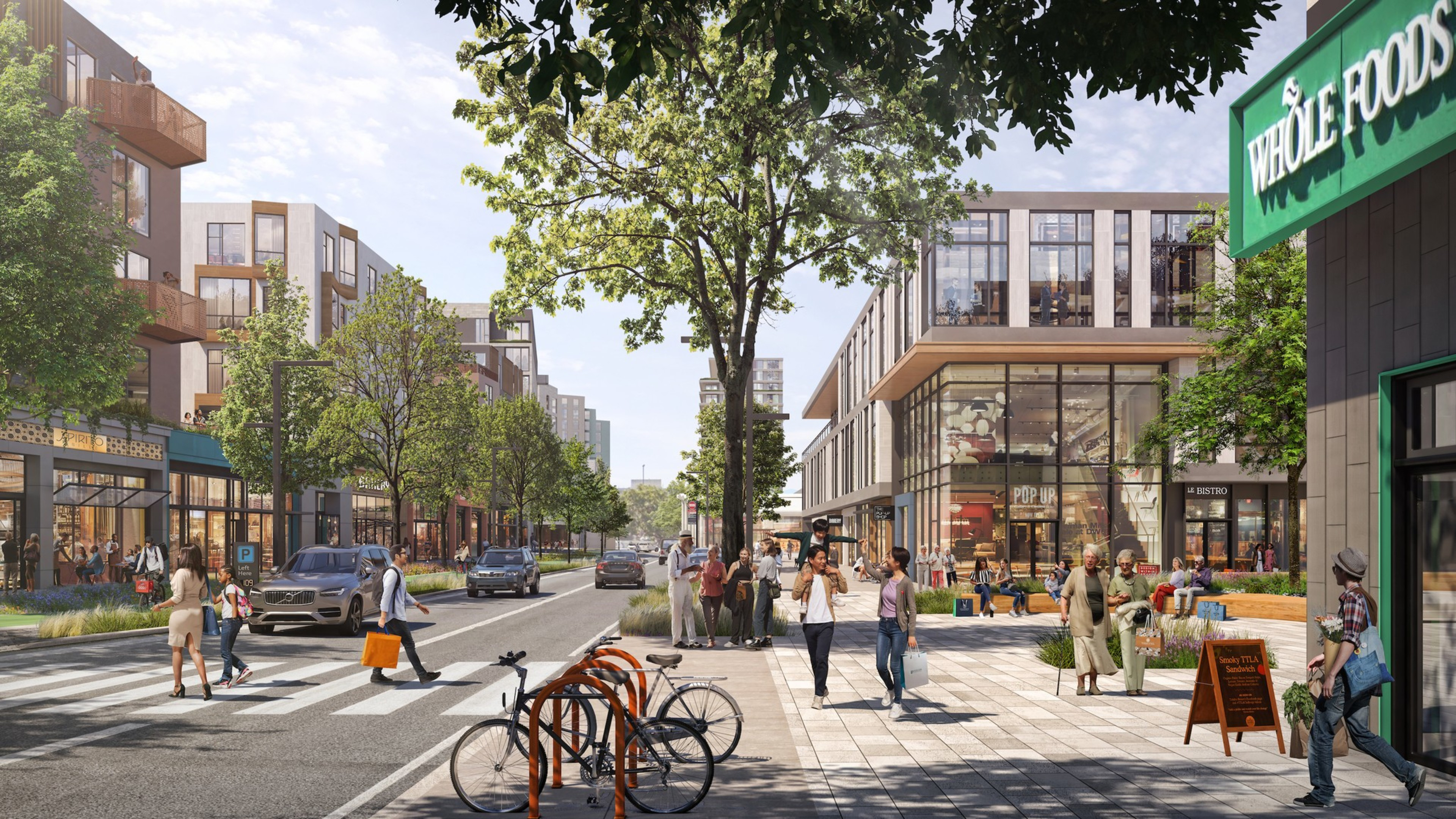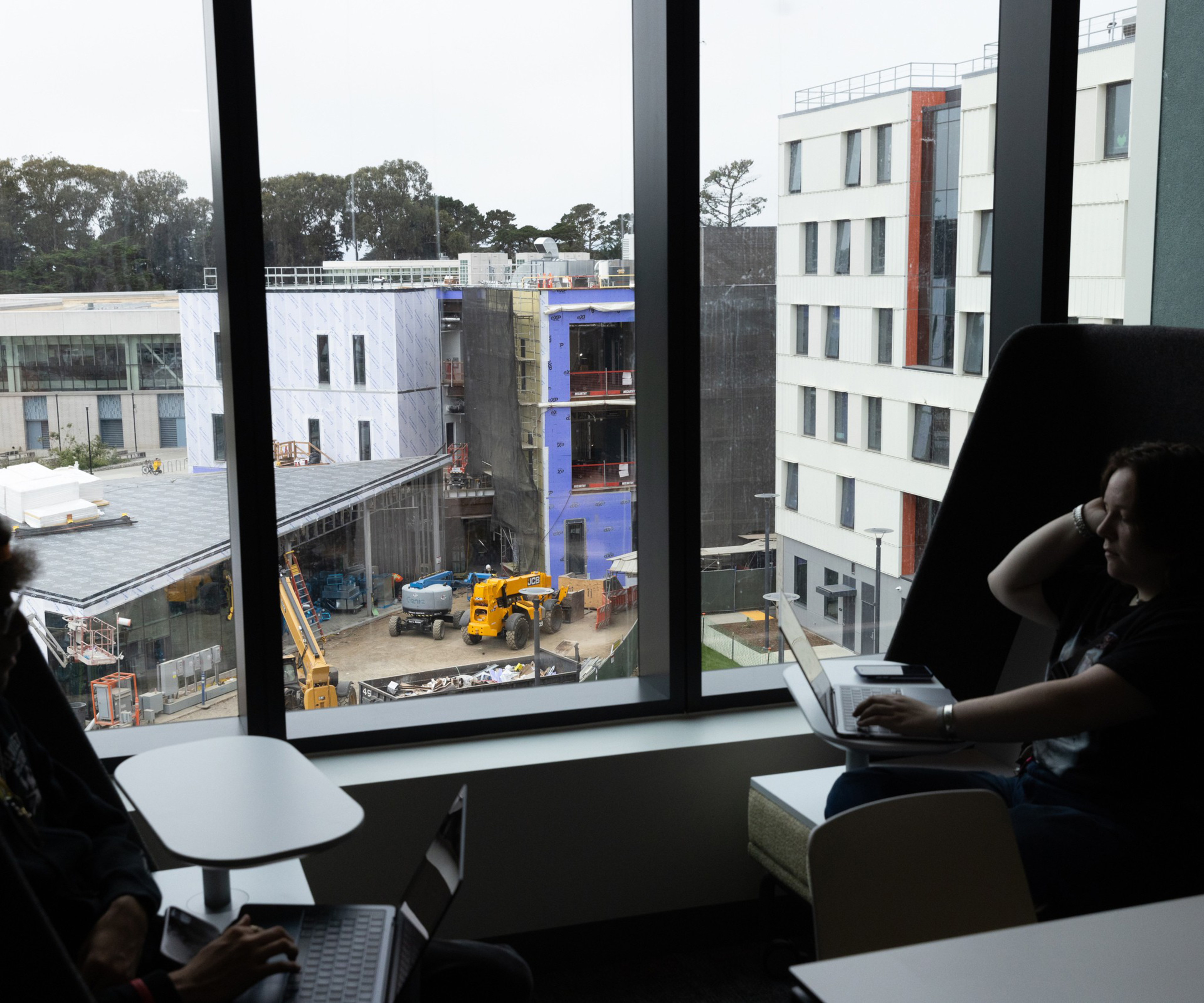Parkmerced, a 3,200-home neighborhood in southwestern San Francisco, faces decaying infrastructure and declining financial prospects due to a looming $1.8 billion loan default (opens in new tab), but it’s still one of the best answers to the city’s housing shortage: It’s dense, it’s tall, and it’s available.
In 2011, the Board of Supervisors approved a sweeping plan to transform the 152-acre site over three decades from a rushed World War II-era housing project into a “vibrant, pedestrian-focused” neighborhood of homes linked by public parks and retail.
This plan will account for 2,200 of the 82,000 new homes San Francisco must permit before 2031, with nearly 7,000 additional units still to come in future phases. But 13 years after approval by the city, the project by property owner Maximus Real Estate Partners has yet to break ground.
An entire boom-and-bust real estate cycle has transpired since the project got the green light.


Meanwhile, next to this neighborhood of stalled ambitions, two other key developments involving motivated, well-funded players have taken shape: Stonestown Galleria and San Francisco State University.
Both institutions are linchpins in that part of the city. The former promises to transform the mall’s surrounding parking lots into 3,500 homes, while the latter is taking housing into its own hands in an effort to attract and retain first-year students amid rising living costs.
Both projects leveraged creativity and compromise to work around unfavorable economic conditions, rather than stalling entirely. In comparison, the frozen Parkmerced redevelopment plan (opens in new tab) reads like a pipe dream.
“That area is like a tale of two cities,” said one San Francisco developer who requested anonymity to protect working relationships. “One proposal [Parkmerced], is overly complicated and is led by a group that has never executed on anything of that scale. The others [Stonestown and SFSU] involve institutional players with a track record. Their political timing is also much better, and it’ll help that they’re adding density where the neighbors won’t necessarily mind.”
On time and under budget
One key advantage enjoyed by public-sector projects like SFSU, UC Law SF, and even the Presidio is that project approvals largely fall outside of the purview of the city government, which can be susceptible to charged politics and contentious neighborhood disputes.
But the time saved by avoiding bureaucracy doesn’t mean these projects are slam dunks. For starters, schools have to figure out how to pay for new construction, with funding generally cobbled together from wealthy donors, private debt financing, and government bonds or grants.

In 2022, SFSU administrators secured a lifeline in the form of $116 million from the Higher Education Student Housing Grant Program in the state budget. The certainty in financing allowed SFSU to construct its first-ever housing project using state dollars, said Ron Kirkpatrick, the university’s director of capital planning and special projects. The six-floor, 265-room building, known as the West Grove Commons, opened this month in time for the fall semester.
Of the 728 freshmen who will occupy the dorms, more than 400 are eligible for reduced rent.
“If we didn’t get this project right, no other [student housing] projects like this would get funded,” Kirkpatrick said. “We had one shot with this money.”
The period between SFSU winning the state grant and students moving in was less than two years.
“We treated all of the pre-approval work like actual client meetings,” said Lynne Riesselman, principal of EHDD Architecture, which won the bid but started collaborating with the general contractor, McCarthy Building Companies, months prior.

In previous years, it was common for a developer to wait to get the sign-off from planners on all aspects of a proposal before beginning construction, but the SFSU group opted for a phased approach, building what it could as it went.
The group had to make compromises to the design along the way in order to keep the project moving forward, Riesselman said. For example, mass timber construction was preferred for its sustainability but was swapped out in favor of concrete, since the Office of the State Fire Marshal had never approved such a project on campus.
“Delaying a project by six weeks to hash out some disagreement or confusion would have been life or death for this project,” Kirkpatrick added.
Making up for lost time
Just north of Parkmerced and SFSU, Brookfield Properties won unanimous approvals in July for its proposed redevelopment of Stonestown Galleria.
The project will maintain the popular shopping mall while transforming the area around it into a walkable neighborhood of homes and parks, including a “merchant lane” which will be located on a newly created street 20th Avenue. Brookfield said it intends to start construction within two years.


“This is a very large down payment into the housing we are required to build on the west side of town,” District 7 Supervisor Myrna Melgar said during the vote. “This is an ideal place to build, on top of parking lots, in an existing commercial hub.”
Parkmerced’s plan, on the other hand, proposes the demolition of 1,500 rent-controlled units on the project site. Maximus, which did not respond to requests for comment, agreed to replace those homes while maintaining at least one-third of the new units below market rate. Other enhancements include realigning the Muni M line, which connects the area to downtown, through the new neighborhood.
The first phase of the project, meant to add 1,600 homes plus street improvements, was slated to start in 2016. But lawsuits and a lengthy back and forth with city planners pushed that timeline back. Then came the pandemic, which upended real estate business models that relied on high occupancies and rent growth.
“It’s not rocket science,” said Corey Smith, executive director at the Housing Action Coalition, which advocates for affordable housing for all. “The capital that pays for [a development] needs to see a return that exceeds their investment in order to justify breaking ground.”
Having observed the project from afar, Smith speculates that the budget is no longer balanced due to rising construction costs and diminished revenues.
Dan Sider, chief of staff for San Francisco Planning, said that should Maximus come approach the department today, it will find a “constant drum beat” within the staff to move projects such as Parkmerced project along. “We’re pulling every lever we can,” he said, referring to adjusting inclusionary housing levels and deferring fees.
Stonestown’s owner, the multinational real estate firm Brookfield, has more capital at its disposal and a more diverse risk profile than Maximus, which has one project in the city (opens in new tab).

Around the same time Brookfield defaulted on its loan for the San Francisco Centre Mall in 2023, it was able to purchase a distressed, $1 billion apartment portfolio while continuing to pursue development at Stonestown.
“[Brookfield] actually has experience getting things done in this city,” the anonymous San Francisco developer said. “Even if they’ve stumbled at times, they seem to have a good sense of where the demand is going.”
The southwest corner of the city, as opposed to downtown, stands to benefit as a result.
“For years, development of any real scale on the west side was the butt of jokes,” Sider said. “But with today’s tranche of approved projects, it could be starting to make up for lost time.”

